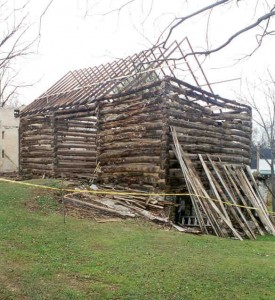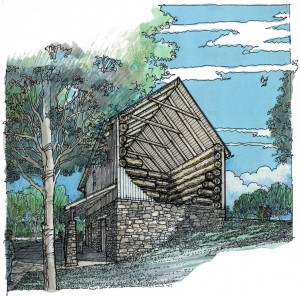Last night was the Board of Supervisors meeting and unfortunately I was unable to attend due to regularly scheduled DuPortail House Board meeting. Although the supervisors meeting was short, there was a notable issue from resident John Petersen under the resident comment section. Petersen asked for relief from the township on stormwater damage to his property and cited neighbor’s property where stormwater damaged was repaired by the township. It is my understanding that the township manager claimed that the damage to the neighboring properties is different, and as a result, the township is not responsible for Petersen’s driveway stormwater damage. What recourse does Petersen and other homeowners with similar stormwater damage have with the township to receive repairs? I’m not sure what the difference was between the two properties, but if there was stormwater repair to a resident’s property, does that now open the floodgates for other residents to ask (and receive) the same type of consideration from the township? Perhaps John can explain the difference between his damage and his neighbors stormwater damage. I know that we support fair and equal treatment for all citizens.
Follow-up: I spoke with John Petersen and he will not be commenting on his stormwater damage.
There was a TESD Finance Committee meeting and my friend Ray Clarke has provided some very interesting notes from the meeting. It seems that EIT has reared its ugly head again and will be discussed at an informational session in October. I about choked when I read Ray’s notes concerning the possibility of an 8% property tax increase! Folks, we may have squeaked by last year but between the township and the school district, the picture is not looking good for 2011. I fear that the budgets in 2010 were band-aid solutions and just put off the inevitable.
I’ll be interested in your comments, both on stormwater damage to private property and also on the Ray Clark’s remarks about from the Finance Committee meeting.
Ray Clark’s TESD Finance Committee Meeting Notes . . .
1. The current year P&L
– Already $1 million in the hole because although transfer taxes are budgeted on a 7 year rolling average, there is no mechanism to bring that amount into the P&L from the General Fund or any Transfer Tax Fund, so the P&L has to reflect the actual expected amounts. Budget $2.7 million; expected actual $1.7 million (last year $1.8 million)
– Revenues are also under pressure from a high number of residential and commercial property appeals, with an average 20% reduction in value (see EIT discussion later!)
– Offsetting the revenue declines and ~$0.3 million of unbudgeted teacher movement across the salary matrix (is this a surprise?) are about $0.7 million of PSERS expense deferral (thank you Harrisburg), and about $1 million of savings from a reduction of 15 teaching positions as part of last year’s strategies.
– Also on the downside, $0.3 million of the expense savings are being rethought – money to come from the Contingency, unused in previous years2. Un-expensed unused vacation/sick time liabilities
– The liability (General Fund designation) for vested employee services nearly doubled last year, to $6.2 million (fully one fifth of the General Fund balance!). As far as I can see, the $2.8 million increase was never expensed, just a below the line item. The increase came from a review of the liability; it’s not clear that there is any process for annually reviewing and updating the liability in a way that flows through the operating budget. Maybe others can help me on this.3. Anne Crowley stands up for due process
– There was a proposal to pay $300K for a new scheduling/report card/transcript/etc. system from the same vendor who has been severely limiting support of the current system. The reason being, the great support provided by the vendor – until they don’t, apparently. And annual maintenance is over 50% of the capital cost. Of course we all know how important is is for these reports to be right (but the system doesn’t protect against the bad data that has been known to show up!), and the vendor is reputable, but at least let’s make this private equity-owned vendor just a little concerned about losing cash flow! Mrs Crowley lead the charge on this and hopefully there will be a good market justification and maybe some cost savings before this gets passed through the Board Consent Agenda.4. Addressing next year’s $7 million gap – the EIT option
– Administration’s estimate for the Act 1 cap next year is 1.4% – worth only $1.25 million. So, we’d be looking at one or a combination of:
a) Asking voters in May 2011 to approve “exceptions” and increase property taxes by 8% (or more to offset declining assessments)
b) Cutting expenses (Superintendent Waters claims they are “to the bone” already)
c) Asking voters in May 2011 to approve an EIT
– The general attitude of our elected officials at the meeting seemed to be a regret that the cap and voter-unapproved property tax increase could not be higher
– Mrs Fadem noted that five** School Board members’ terms are expiring in 2011 and she considered that asking for an EIT would complicate any re-election bids. (**Bookstaber, Bruce, Cruickshank, Mahoney, Motel)
– Although it’s known that November 16th is the deadline to notify the Townships of the intent to put an EIT to voter referendum, very little other information is available. What is the aggregate income of the District residents? How much revenue could be raised at what rate? What rights do the Townships have to appropriate any of the proceeds? How much is already being paid by TESD residents that would stay within the District? What percentage of residents already pay an EIT? How would an EIT or property tax increase differentially affect senior citizens and other voter blocs? How much would the tax cost to administer? What is the likely year-to-year variability in income? Is there a limit to the rate that the District can impose? Can TESD reclaim the tax paid to Philadelphia? Etc.
– The officials seemed ready to declare the result of the referendum without answers to these questions – today’s outcome would be no different to the voter response to the (totally different) question four years ago. However, cooler heads prevailed, and an information session/workshop is to be scheduled for mid-October. An important occasion, I’d think.5. CHS parking slots sold out at $100
– up from $10. But there are major issues with increasing student admission to Teamer Field from $3 to $5.

